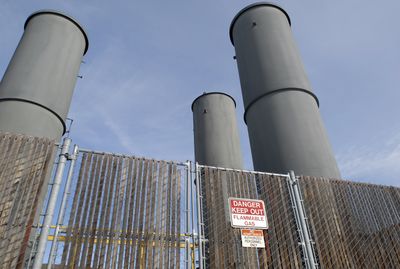Emissions goal unlikely, leaders say
Officials say 2012 is too soon to meet pact signed by Hession

Three years before the city’s deadline to significantly reduce greenhouse gas emissions, many Spokane leaders say the goal aimed at slowing climate change can’t be achieved.
At least not by 2012.
“Nobody argues that the goals aren’t worthwhile,” said Spokane City Councilman Steve Corker. “I would just say that we need to be accepting of the present and future realities.”
In 2007, former Spokane Mayor Dennis Hession signed the U.S. Conference of Mayors Climate Protection Agreement, a commitment to “strive to” reduce greenho use gas emissions to 7 percent below their 1990 levels by 2012. That reduction is meant to reflect standards set in the Kyoto Protocol, an international treaty that was never approved by the U.S. Senate.
A recent greenhouse gas inventory under consideration by the Spokane City Council estimates that in 2005, the equivalent of 3.2 million metric tons of carbon dioxide was released in Spokane. That’s up from an estimated 3 million metric tons in 1990. More than half the emissions resulted from vehicle travel.
To meet the Kyoto goal, Spokane would have to cut emissions by about 14 percent.
“It’s possible, but not probable,” Spokane Mayor Mary Verner said.
She and other leaders are focusing instead on other goals. Verner’s Sustainability Task Force has recommended adopting the state’s goal, which is to reduce emissions to 1990 levels by 2020. The city’s proposed inventory report recommends adding the goal of cutting emissions by 1.2 percent a year to reach a 30 percent reduction by 2030.
Lloyd Brewer, Spokane’s environmental programs manager, calculated the 1990 and 2005 city emissions and has stressed that the earlier numbers are extremely rough because little data is available from 1990.
“If we reset the baseline to 2005, it’s a more valid measure,” Verner said.
This week, the City Council delayed a vote on accepting the emissions inventory. Some members questioned if approving the report would force the city into meeting the goals stated in the document.
“They could be overly ambitious goals that could be held over our heads to meet when we might have no way to attain them,” Councilwoman Nancy McLaughlin said.
Councilman Richard Rush, however, said even the 2012 goal is “doable” without regulations. The key will be education and strong leadership, he said.
“The need is urgent, and we need to push ahead,” he said.
Corker said he’s OK with maintaining the lofty goals because they might push the city to quicker action.
Still, he said, “I don’t think they’re realistic, especially with all the other issues that we’re facing in the economy.”
Verner argues that saving energy ultimately saves money. Her Sustainability Task Force is finishing a report recommending some 50 steps aimed at reducing emissions. There are few regulations suggested. But some ideas have price tags, such as creating incentives for development of solar and wind energy sources and increasing the city’s use of electric vehicles.
There is some good news in the inventory report. The city, it says, already has met the 2012 Kyoto goal when only government functions are counted. That’s attributed to the closure and capping of landfills in the early 1990s. The change in how the city disposes of waste – it’s now burned in the Waste-to-Energy Plant – significantly cut methane emissions.
Hession, now the interim CEO of the Northwest Museum of Arts and Culture, said continuing to emphasize the 2012 goal would set an important example.
“A minimizing of the standard or of the goal would be inconsistent with that statement and inconsistent with what I believe the city ought to stand for,” he said.